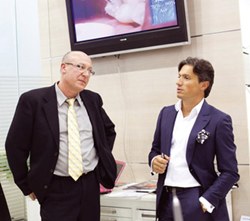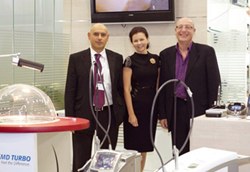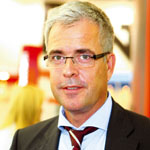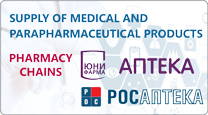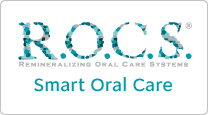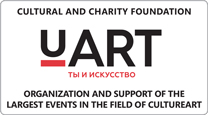Dmitriy Butusov: I Am Sure That Diode Lasers Will Become a Part of the Dentist’s Chair
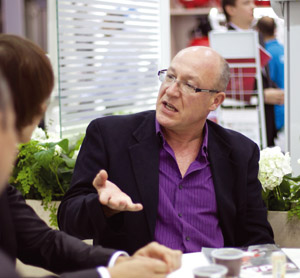 Biolase
is a manufacturing company that has been a driving force on the market of
dental laser equipment for years. The American Company’s products are seen as
future that arrives as it presents its every next new development. This time we
would like you to meet Dmitriy Butusov, chief R&D engineer of Biolase, and
discuss the evolution and problems of laser dentistry.
Biolase
is a manufacturing company that has been a driving force on the market of
dental laser equipment for years. The American Company’s products are seen as
future that arrives as it presents its every next new development. This time we
would like you to meet Dmitriy Butusov, chief R&D engineer of Biolase, and
discuss the evolution and problems of laser dentistry.
— Our first question will be about Epic, of course — your new diode laser, because, as we all know, each new product that you bring to the dental laser market has great repercussions.
— Every new device, when I conceive it, must always
have a number of apparent key advantages. The first thing I can say about
Epic is that it’s
Another thing we did with Epic was to chop the impulse. After a series of experiments we realized that the shorter the impulse the less the beam heats the tissues. The idea behind this is that the lower the temperature, the less it hurts the patient, and one can have even more procedures without the use of anesthetics. The impulse for Epic was selected 10 microseconds long, or one fifth of what Ezlase had. The question now is how do we sell it, because inventions get copied as soon as we begin promoting and explaining them.
— This must be one of the key problems for a
manufacturer such as Biolase?
— One needs to
keep a pace or two ahead of competition, and when they copy what you have, you
already have something new, and when they copy again, you come up with
something novel again. This means that Biolase is the pacemaker in laser
dentistry.
Because, for example, when we made our first Waterlase MD, we added a long
impulse and gave the user an option to choose. When I look at it now, it amazes
me how correct the solution was for the time. Except one model on the market
today, absolutely all lasers offer at least two impulse lengths. We had to
figure this out by ourselves, nobody had done that before us, and we hold the
US patent, while the European patent is pending.
— What is the key patent that Biolase holds?
— Our major patent, both in America and in Europe, is the use of laser with water to cut biological tissues. In the past, water was not used for cutting, because water is a cooling agent, isn’t it? But to make a cut, one needs to boil water – so why pour cold water on tissue if it must be boiled? This is nonsense. But Biolase chose a different approach, and succeeded. There’s another company that holds a European patent for dental cutting with at least 200−micron water film on the surface. All other manufacturers need to buy our license. Just as with wavelength, where we are also the patent holder.
— Are there any dentistry procedures where laser in future could replace other tools, or where it is now close to becoming irreplaceable?
— Take it from me; in this respect I regard the diodes
— If we are helped – I mean, if there will be competition – then perhaps in three maybe five years lasers will be on display in half of the booths at exhibitions, not in five booths like now. Just as it is happening in cosmetology at present. Going back to procedures, where the laser is going to replace other tools, let’s consider the scalpel as an example. But we must make a tool that looks like a scalpel, even metal sheen and all, but with the laser inside. It will feel like a good old handy tool, but tissues will heal without bleeding, because of the laser inside.
— What about the
drill?
— Not so sure. The drill is a simple and
extremely handy tool. Since childhood, we keep sawing and cutting things, and
we drill holes. Then again, the drill is cheap. So, replacing the drill with
the laser is a great objective, but how real is that?
Sure, if we possessed the vision and genius such as of Steve Jobs, we could do it sooner. Like today, we are all used to fingering screens, but when I bought my first touchscreen handset, I trashed it in a year, because it was so hard to use. But new telephone models are so multifunctional that I use them now anyway, even though I still think that physical buttons are easier by definition. And so is the drill handier by definition, but the laser can offer numerous new possibilities.
— Laser dentistry is a broad and growing phenomenon. Is it going to enter basic dentist training curricula any time soon?
— Not too soon, if at all. In the US, only two colleges offer the course, just as in Russia, and only thanks to pioneering individuals. Things like this are always done by people who want more than just making money, and such cases are rare.
— Why is this such a slow process? Has the technology not been in use long enough?
— I know the figures: it took dentists 20 years to
switch from the standard drill
— However it is not the price that is the problem. Our big issue is that we cannot convincingly prove to doctors that their investments will pay back. People tend to have misgivings when it comes to spending, even if there are a million of examples. I know a young man who contacted our training center, he came and heard us out, and then he told his parents that he needed money. His parents said: “Hey, you still have that school loan to repay.” And he replied that if he gets the money he would repay the loan. His parents mortgaged their property, and he repaid the loan in a year. In fact, he’s just a gifted and smart guy. Another example, a Russian boy approached me at the LA exhibition, he shook my hand and told me, “Dmitriy, this is one cool laser”. I asked him, what do you mean by ‘cool laser’? And he said: “See, I had it delivered on Friday afternoon, and when everyone left after five, I used it for an hour and a half on molars. Then a patient came to me next Monday, he opened his mouth and I made him eleven fillings. The money that the patient paid to me was enough to pay for the laser for a month in advance, both purchase and servicing. And after that first patient, I was earning for myself.” But of course he was totally right, and that’s how it should be. And that’s how it actually is.
— Could you please tell us how Biolase has
organized its production? And where?
— In
America. Sometime ago we outsourced two assembly operations to China. We found
people there who were doing something pretty close for dentistry; we went
there, made a demonstration, discussed and tested it. Things were just fine for
about six months, and then it all stalled. A batch arrives, and the bits refuse
to fit. Then we learned that one of their tools failed and they make a new one.
I said, Hey why didn’t you tell us so, we’d send some spares. It happened once,
then again. We objected. They told us that’s the only way for them. So we had
to recall the function back, we found people here in the US who did it for the
same money, because they found a way to optimize the process.
— Do you mean all assembly operations have
stayed in America?
— Sure. I always thought that
when we need to handle some complex assembly stage, one only needs gentle
fingers and the ability to repeat the same procedure day in day out. But I was
wrong. Like it or not, the difficult stages in our production are extremely
difficult to clock. And even if we write a very elaborate procedure
instruction, it will be impossible to follow in real life – at least this
applies to our five key procedures. What we need is for the operator to have
the hunch, both in the head and in the hands. And to get that hunch, one needs
lots of efforts, and then one needs something else that only God can give …
— Like playing the
piano?
— Exactly, like playing the piano, right you
are. For example, the last stage
— I never was an exemplar student in high school, and I was confused when it was time to think about the future career. At the period life was mostly about rowing sports, I hardly ever stayed in Leningrad, our team traveled all the time, it was either training or racing. So when I was confronted with choice, I took the line of least resistance and went to the Polytechnic College, simply because my father was there on the faculty. My sports craze lasted until my third year in college, but then I got stuck in hospitals: now it was peritonitis, now they broke my nose in a fight… By the time our rowing team was flying high: the only team who could beat us later ended up as world champions, and then they won the Olympics. As a result I left sports and got down to studies. I’d rather say it was a touch of luck, because the college formed a class who were mostly taught by professors from the Institute of Physical Engineering under the Academy of Sciences. Those were awesome and smart people, who had also been through an excellent school, and they had a philosophy of their own. I really liked their company and our studies, I got hooked. So I should say that I was pretty lucky about it all: I mean that fight, and appendicitis, the hospital and all that, because otherwise I might have become an athlete, who knows…
— Perhaps you would also win the
Olympics?
— I don’t know. Well, and then… My
grandfather was Mikhail Butusov, a legend of Russian soccer, and he told my
dad: if you can’t be the best in sports, get out. Because it’s alright if one
is a poor engineer or a mediocre doctor, but being a poor athlete is worse than
being dead, he said. He was that kind of guy, my granddad.
— What is your passion
now?
— I have always loved being around water; I used
to swim when I lived in Austria, and I also practiced windsurfing. But after I
came to America, my job became my only hobby, unfortunately. Perhaps there was
no more room for a hobby in my life, what with the family and children: I have
three boys. My children were doing sports, and this was something like a hobby
for me.
— Now our last question, or rather a request.
What would you recommend the readers of Unident
Today?
— Don’t think you know everything, even
if you know something really well. Unfortunately, this is what makes people
grow old. Doubt everything, always. If they tell you something but you think
you know better, be honest with yourself, try and learn something new. When
people are sure there’s nothing else for them to learn, they make errors. This
goes as much for family relations as for career work, this applies to life in
general.
Back

